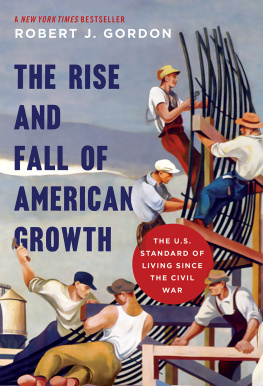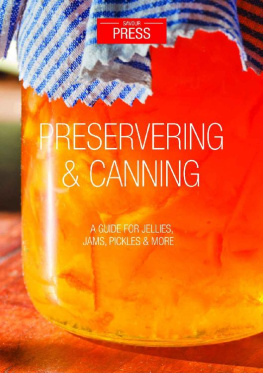The Preppers
Canning & Preserving Bible
5 Books in 1
THE COMPLETE GUIDE TO WATER & PRESSURE CANNING,
DEHYDRATING, FERMENTING AND PICKLING FOOD.
EASY RECIPES TO SURVIVE AFTER THE SOCIETY COLLAPSE
Tyler Gordon
Copyright 2022 - All rights reserved.
The content contained within this book may not be reproduced, duplicated or transmitted without direct written permission from the author or the publisher.
Under no circumstances will any blame or legal responsibility be held against the publisher, or author, for any damages, reparation, or monetary loss due to the information contained within this book. Either directly or indirectly.
Legal Notice:
This book is copyright protected. This book is only for personal use. You cannot amend, distribute, sell, use, quote or paraphrase any part, or the content within this book, without the consent of the author or publisher.
Disclaimer Notice:
By reading this document, the reader agrees that under no circumstances is the author responsible for any losses, direct or indirect, which are incurred as a result of the use of information contained within this document, including, but not limited to, errors, omissions, or inaccuracies.
Table of Contents
Introduction
Canning is a method of preserving foods by processing them in an airtight container. Canning foods goes back to the early 1800s when a French confectioner and brewer noticed that his foods did not spoil when cooked inside a sealed jar. From there, canning took off and became the most popular and effective way to preserve and store foods.
When foods are canned, their shelf life increases, making a perishable food safe to consume for about one to five years, depending on the food. It is a perfect way to preserve food if you have an abundance and do not want it to spoil. It is also a great method of storing food and preparing foods in advance.
Welcome to the world of home canning! Weather you have recently become interested in canning or have always wanted to learn how to can foods, this book is for you. You will learn about all the tools needed to can, the step-by-step process of how to can a wide variety of foods, and the safety guidelines to help you produce delicious and protected foods. By the end of this book, you will be able to can everything!
BOOK 1: CANNING AND PRESERVING FOR PREPPERS
Chapter 1: Understanding Canning and Preserving
History of Canning
Since longer prehistoric times, humans have tried to develop a new technique to keep their food last longer. At that time, they develop various methods like pickling, drying, salting, and smoking food to keep their food lasts for a long time.
Canning is one of the most popular methods that help to preserve food for a long time. The food is processed and packed into airtight containers which help to increase the shelf life typically from 1 to 5 years and in some circumstances, it is preserved for a very long time. For example, canned dried lentils are found in the edible state after 30 years of a long time.
During the period of Napoleonic war (1803) Napoleon Bonaparte realizes that his soldiers were starving due to lack of fresh food because fresh foods are decaying during the war period. To find the permanent solution on food preservation Napoleon Bonaparte offered a reward of 12000-franc to those who find the cheap and continent way to preserve a large amount of food for his army and navy soldiers.
Nicolas Appert is young chief accepted this challenge and doing long research over food preservation and finally, in 1809 he found that the food cooked inside the sealed jar did not spoil for a very long period of time unless the jar seal was leaked, and food is exposed with oxygen. In Nicolas Appert method of a jar, sealing allows preserving soups, vegetables, dairy products, fruits, juices, syrup, and jellies. In 1810 French minister awarded Nicolas Appert for his experiment. Before 50 years Louis Pasteur explains the science behind sealing. When the food is heated in bottles or jar the microorganism in the food is vanished and the sealing protects food to enter any microorganism enter into food.
In 1810 instead of bottles and jar tin-coated irons are used and patented by Peter Durand. He also supplies a large quantity of canned food to Navy and army soldiers. In the 19th century, double stem technology is used to manufacture most of the modern can. Today the advanced water bath canning and pressure canning technology are used to preserve the food long-lasting.

Benefits of Canning
C anning food at home is a safe and satisfying procedure that is regaining popularity as food costs rise and people recognize the importance of safeguarding their food supplies. Home canning is a great way to improve your intake of local foods by preserving food. Eating locally necessitates eating foods in season, and canning allows you to capture the bounty of any particular crop in season and increase its availability year-round.
You can do home canning as a hobbyist or as a full-time enthusiast who preserves a significant portion of his or her food supply. You will reap many personal benefits, while being a better steward of the environment and supporting your local economy, whether you want to enjoy a couple of fun weekend chores putting up jam or significantly supplement your diet. In addition, given the state of the global food market, you'll save money as well, especially as time passes. Unlike grocery store food, which comes in disposable packaging, your home-preserved meals will be stored in jars that you may reuse time after time.
Excellent taste and quality
When you utilize high-quality food and follow the canning process correctly, you'll be able to make items that are superior to those found in the supermarket. Many recipes for home-canned food are delectable, and the quality is unrivaled.
You'll have complete control over the ingredients because you'll be able to see where your food comes from when you can it at home. Your own garden and fruit trees, as well as local organic farms and any local farm, are excellent sources of fruits and vegetables. You can hand-pick your food at the peak of ripeness from any of these sources. You will also decrease your exposure to Bisphenol A, which is used to line the cans of many mass-produced foods. Bisphenol A is an endocrine disruptor, and its potential danger to humans is becoming more widely recognized.
Local economic support
When you buy directly from local growers, you are putting money into the hands of locals. Local growers prefer selling from their own farms or market stands since they are not bound by the pricing established by large commodities buyers. This also permits local growers, particularly small ones, to maintain profitability, which is beneficial to the local economy.
Reduce your carbon impact
The food we eat requires a significant amount of energy to produce and transport. Pesticides, herbicides, and petrochemical fertilizers are also used in highly industrialized agriculture. All of these variables affect the ecosystem and limit the soil's future ability to produce food, resulting in increased scarcity, lower quality, and higher asset prices. When you buy local food products and can it at home, you are avoiding a large portion of the transportation costs connected with moving food across continents due to spent fuel. Yes, home canning consumes energy, but this pales in comparison to transporting food halfway across the country to supply a shop shelf. Lowering the amount of food, you consume which comes from distant locations reduces the amount of gasoline consumed. Also, while purchasing local produce, look for growers who employ environmentally friendly, sustainable producing practices.

















